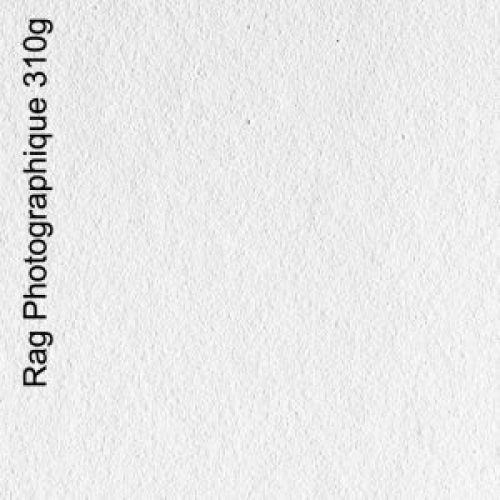Canson – Fine Art and Tradition
CANSON ARCHES AQUARELLE RAG 310
Born Mongolfier – yes, the family of the first airship (which actually gives rise to the stylized hot air balloon that we can still see in the Canson logo) – moved to Mongolfier et Canson in 1801, to become, later, Canson-Mongolfier.
Maker of some of the most famous fine art papers we can find on the market, it offers inkjet printing media with the same quality as traditional paper, but now adapted to modernity and the most demanding processes in terms of fidelity in color reproduction and permanence.
Are you looking for a different Canson paper? Please get in touch.
We have access to all the Canson Infinity line of papers, and depending on your needs, we can produce series in any paper of the French brand.
[/col] [col span=”4″ span__sm=”12″] [ux_image id=”15750″ image_size=”large”] [/col] [/row] [/section] [section label=”Section with arrow” bg_color=”#0a0a0a” dark=”true” mask=”arrow” padding=”59px” height=”300px” border=”1px 0px 0px 0px” border_color=”rgb(235, 235, 235)”] [gap] [row] [col span=”6″ span__sm=”12″ text_depth=”2″]SUPERB RAG, GREAT DMAX
CANSON RAG PHOTOGRAPHIQUE 310
Canson Rag Photographique is a white paper, very suitable for photography, illustration and other segments. It’s a 100% cotton paper of superior standard.
The exceptionally soft white tone is achieved during its production by introducing natural minerals into the manufacturing process. It’s specially developed to meet all the high permanence requirements, as well as the most stringent requirements presented demanded by the artistic community.
The Canson Rag Photographique 310gsm (at Pigmento we don’t stock the lighter version) offers an extra-smooth matte surface with an almost velvety feel. It also features one of the highest Dmax values currently available on the market, making it the ideal media for both photography and illustration.
You can choose this paper for your custom sample pack.
[ux_image id=”16015″ image_size=”original”] [/col] [/row] [/section] [row style=”collapse” col_style=”dashed” col_bg=”rgb(255,255,255)” v_align=”middle” h_align=”center”] [col span=”2″ span__sm=”12″ align=”center”] [ux_image id=”15876″ width=”50″]STRUCTURE
Natural Fibres
SUBSTRATE
100% cotton
SURFACE
Matte/Textured
WHITENESS
White (89,80 CIE)
OBA
No OBAs
WEIGHT
310gsm
SPECS / CLARIFICATION
We try to keep all data up-to-date and in sync with the manufacturer information, but if you consider any of the specs truly critical to your decision, please check the official information on the manufacturer’s website over at Canson Infinity.
[/col] [/row] [row] [col span=”6″ span__sm=”12″] [accordion] [accordion-item title=”Structure: Natural fibres”]Papers are predominantly produced as one of two kinds:
- Resin coated papers (RC). These papers make use of fewer fibers and replace fibers with resin (which is just a cute name for “plastic”). This means that these papers tend to be much cheaper, strong and robust, but also tend to be less attractive to the touch and less ink-friendly. They tend to be very popular in consumer markets;
- Papers based on natural fibers. They’re traditional papers, manufactured without plastics, exclusively produced from vegetable fibers. They tend to accept more ink and look much more attractive when correctly printed. They are the paper of choice for the vast majority of our customers.
What is the paper base or substrate? Possibilities include:
- Cellulose pulp – also called wood pulp – is the most common (and cheaper) way to produce paper;
- Alpha-cellulose – the noblest portion of cellulose pulp. Commonly tested for cotton-like archival characteristics;
- Cotton – the most common fiber for the production of media for fine art. Read more about this subject in our FAQ;
- Bamboo, agave, hemp – ecologically better alternatives than cotton. Many other vegetable fibers (e.g. mulberry) can be used to produce paper with archival characteristics using fewer pesticides and much less water.
At Pigmento we tendo to divide paper finish onto six groups and not always according to what a manufacturer advertises.
- Matte (or Matt) – smooth or textured;
- Gloss – semi-gloss, glossy and high gloss;
- Duo (Duplex) – Special papers (such as Photo Rag Duo) that can be printed in full quality on both sides.
Paper “whiteness” may be defined as follows:
- Cool white – a paper with a blue hue (cool tone);
- Bright or Very White – a paper whiter than natural white papers, but without the bluish tint of cool white paper;
- White (or Natural White) – a natural white (not as white as bright white). Most rags fall into this category;
- Warm – a distinctly warmer paper (yellowish tone);
- Perlescent – paper with a warm gray tone (usually found in metallic and pearl finish papers).
OBA is the short form for Optical Brightening Agents.
OBAs are chemical compounds added to some papers coating. They are used to enhance the appearance of color, whitening the paper by increasing the amount of blue light reflected and, as a result, offsetting natural yellow tones.
Different papers contain different levels of OBAs. You can confirm whether a paper contains optical brightening agents by placing a sheet under UV light. If it shows a purple color then it contains OBAs, the brighter the purple emitted light, the more OBAs are present in the paper.
In a bit more technical terms, an OBA, or optical bleach, is a colorless aniline, which absorbs UV radiation and emits it as visible radiation. The presence of optical bleach on the paper imposes a predominant reflection in the blue region of the spectrum, positively influencing the reproduction of cool colors (greens, blues and derivatives), thus negatively interfering with the reproduction of warm colors.
[/accordion-item] [accordion-item title=”Weight: 310gsm”]The weight (or gramature) of a paper is commonly expressed in grams per square meter (gsm).
It is technically not the same thing as paper thickness, but there is an obvious correlation. European fine art papers are generally around the 300gsm mark. Asian papers, historically, tend to be lighter and somewhere between 100 and 200gsm.
Heavy-weight papers (or high-gramature papers) tend to have greater opacity, meaning you will see less through them.
[/accordion-item] [/accordion] [/col] [/row] [/section]
